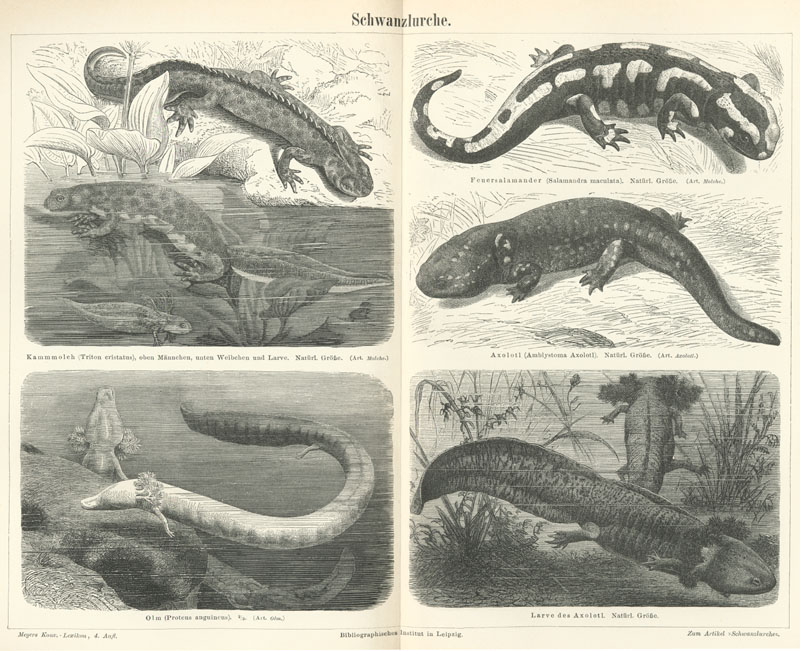northern crested newt (Triturus cristatus), fire salamander (Salamandra salamandra), axolotl or Mexican salamander (Ambystoma mexicanum), olm (Proteus anguinus) English: Salamander
Français : Urodèles
Deutsch: Schwanzlurche
- Kammmolch (Triton cristatus), oben Männchen, unten Weibchen und Larve. Natürl. Größe. (Art. Molche.)
- Feuersalamander (Salamandra maculata). Natürl. Größe. (Art. Molche.)
- Axolotl (Amblystoma Axolotl). Natürl. Größe. (Art. Axolotl.)
- Olm (Proteus anguineus). 2/3. (Art. Olm.)
- Larve des Axolotl. Natürl. Größe.
Date 1885-90
Source Meyers Konversationslexikon. http://susi.e-technik.uni-ulm.de:8080/Meyers2/index/index.html Meyers Konversations-Lexikon
Author Bibliographisches Institut
Source: https://commons.wikimedia.org/wiki/File:Meyers_b14_s0686a.jpg
The northern crested newt, also known as the great crested newt or warty newt (Triturus cristatus) is a newt in the family Salamandridae, found across Europe and parts of Asia.
The fire salamander (Salamandra salamandra) is possibly the best-known salamander species in Europe.
The axolotl also known as a Mexican salamander (Ambystoma mexicanum) or a Mexican walking fish, is a neotenic salamander. The species originates from numerous lakes, such as Lake Xochimilco underlying Mexico City.
The olm or proteus (Proteus anguinus) is an aquatic salamander in the family Proteidae, the only exclusively cave-dwelling chordate species found in Europe.
